TMJ Therapy – Powell, OH
Get Help with Managing Chronic TMJ Pain and Headaches
The TMJ (temporomandibular joint) is the set of hinges that allows your lower jaw to move fluidly in all directions, essentially giving you the ability to eat, speak, and laugh. Like other joints in the body, it can sometimes develop dysfunction due to strain and inflammation, which can lead to persistent jaw pain, stiffness, and even headaches and migraines! Thankfully, Dr. Shelley is specially trained to diagnose and treat these issues right here, helping patients get rid of pain and back to their lives as quickly as possible.
Why Choose Powell Dental Sleep Solutions for TMJ Therapy?
- Nearly 20 years of TMJ therapy experience
- Treatments specially-designed for each patient
- Kind, friendly, & highly-skilled team
About TMJ Dysfunction
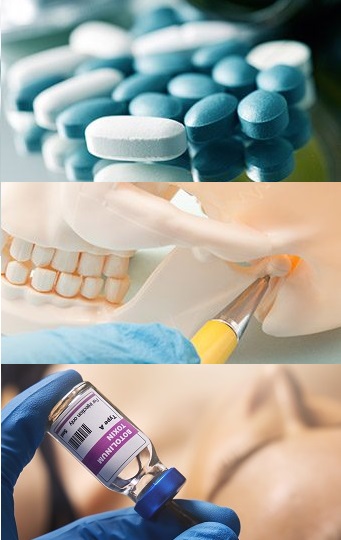
Many people have clicking or popping noises coming from their temporomandibular joints. When symptoms of soreness occur, self-care practices such as eating soft foods, applying moist heat, avoiding gum or heavy chewing, and avoiding extreme jaw movements such as wide yawning, loud singing are helpful in resolving the symptoms. The symptoms are generally temporary, and the pain eventually goes away with little or no treatment. Some people develop significant, long-term symptoms.
The American Dental Association claims that more than 15% of American adults suffer from chronic facial pain that includes jaw pain, headaches, or earaches. TMJ is a serious problem and rehabilitation requires patience. Teeth grinding, and imbalance of chewing surfaces, joint surfaces, or muscle imbalance perpetuates the symptoms.
Your TMJ dentist may elect to inject a numbing agent into your muscles with a two-fold purpose. This procedure may isolate the affected muscles and allow you to relax them after the pain has subsided. The joint may be manipulated more easily if necessary.
If your exam shows indications that require radiographic studies of the jaw, Dr. Shelley may order an MRI or CT scan, if necessary.
How TMJ Dysfunction is Treated
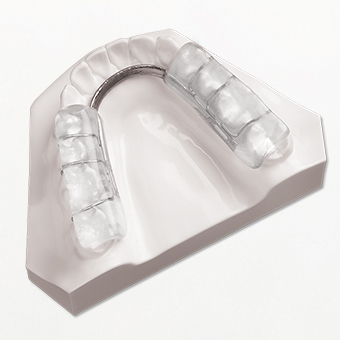
Additional treatments for symptoms that are not relieved by conservative resting measures include anti-inflammatory medications, muscle relaxants, adjusting the misalignment of your teeth, manipulation of a misaligned disc, treating the position of your jaw with splints, physical therapy, botox muscle injections, or a procedure of intra-articular flushing of saline solution into the joint space. Patients with a muscle problem that is causing pain will most likely not benefit from surgery on the temporomandibular joint. When the jaw is acutely locked open, the dental professional may perform a procedure that can allow the displaced cushion (disc) to reposition properly in the jaw joint.
Common TMJ Splints
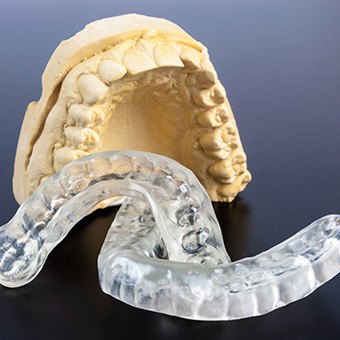
The TMJ dentist will give you specific instructions for your condition. Below is a video demonstrating stretching exercises that may be performed to aid in preventing jaw locking or jaw pain, however, it is most important to ask the physician when it is appropriate to use these exercises. The most common exercises include: relaxed jaw exercise, the goldfish exercises (partial and full opening), chin tucks, resisted opening of the mouth, resisted closing of the mouth, tongue elevation exercises, and lateral jaw movement exercises.
Recommended Jaw Exercises
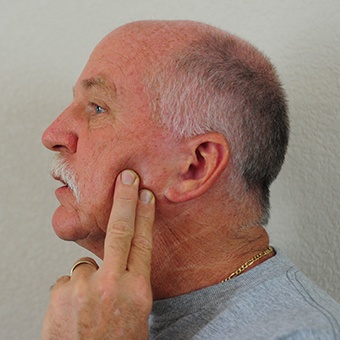
Often, chronic TMJ pain can be managed, lessened, and even eliminated altogether by performing a few helpful exercises each day to strengthen and stretch the jaw muscles. The specific exercises that will work best for you will be determined by Dr. Shelley after a thorough exam. They may include:

1. Strengthening Exercises
When actively experiencing pain and discomfort from a TMJ problem, exercising the area may not be particularly helpful. According to the American Academy of Family Physicians, pain that has subsided can open the door for a number of strengthening TMJ exercises that keep it from returning. These exercises involve opening and closing your mouth while placing some amount of resistance on your chin.
- To perform a resisted opening exercise, put one of your thumbs under your chin and gently push downward against it. As you push your thumb, slowly open your mouth, keeping it open for a few seconds before slowly closing it.
- To perform a resisted closing exercise, keep your thumb under your chin and place your index finger from the same hand on the ridge between your chin and lower lip. Push gently as you close your mouth.
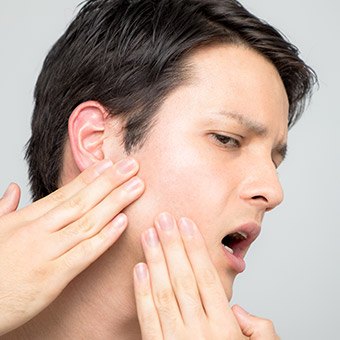
2. Stretching Exercises
Gently stretching the jaw and joint area can also help keep TMJ pain from returning. One way to stretch the jaw involves pressing the tip of the tongue to the roof of your mouth, then slowly opening your mouth as much as you can without it becoming painful. If you feel pain, stop performing the exercise; it may just need more time before you can engage it.
Similar stretching exercises focus on moving the jaw on its own as much as possible without causing yourself discomfort. To do these exercises successfully, try this:
- Start with your mouth closed and your jaw as relaxed as possible. With your teeth slightly apart, slowly open your mouth as wide as you can while looking up with your eyes. Hold your mouth open for a few seconds, then slowly close it.
- Once your mouth is closed again, move your jaw to the left side while looking to your right with your eyes (don't turn your neck or head). Hold this position for a few seconds, the move back to the center. Repeat the stretch, moving your jaw to the right side while looking to your left.

3. Relaxation Exercises
- Exercises that help you relax can also help to relieve TMJ pain – especially if it's stress-related. Mayo Clinic recommends breathing exercises to ease tension in the jaw muscles. If you are feeling tense, try inhaling for a count of five or 10, then slowly exhaling. Although not a form of exercise, learning how to reduce the amount of stress in your life can go a long way toward easing any TMJ-related discomfort that develops as a result.

4. Caring for Your Mouth
- Along with strengthening and stretching exercises, how you care for your mouth can influence your TMJ pain relief efforts, too. When you brush or floss, be careful not to open the mouth too wide, even when reaching the second and third molars. Using a toothpaste such as Colgate® Enamel Health™ Sensitivity Relief can help restore any enamel that's been weakened due to grinding and clenching from TMJ pain.
- The most important thing to keep in mind when trying any TMJ exercises is that they shouldn't hurt. Pain when stretching or opening your mouth is your cue to speak with the dentist or doctor. He or she can examine your mouth and recommend a different course of treatment if needed.
TMJ Treatment FAQs

If you are preparing for TMJ Treatment, you likely have several questions about the process. Here at our office, our team works hard to give each patient the tools and information needed so that they can move forward confidently in their decision to choose TMJ Therapy. We know there are many concerns you might have about this method of care and wonder if your jaw will ever work properly again. To ease your mind and deliver further clarification, we’ve compiled some frequently asked questions for you to review.
Is TMJ Treatment Safe?
Before deciding to pursue TMJ Treatment, it is essential that you spend time finding the right professional to perform this type of care. Once you find someone who possesses the skills, training, and experience, you can be confident that your treatment plan will lead to great results.
Most professionals will opt for more conservative treatment options when targeting temporomandibular joint disorder simply because there is risk involved with surgery. Fortunately, at our office, we offer occlusal splints as well as physical therapy in the form of jaw-stretching exercises.
Can TMJ Be Treated Without Surgery?
Yes. The National Institutes of Health (NIH) encourages physicians to use more conservative methods of treatment before recommending any type of surgery. This is because more complex treatment methods like surgery can cause additional, permanent changes to the jaw. It is best, instead, to opt for an occlusal splint or physical therapy to try and relieve the pain and improve the movement of one’s jaw. The catchphrase for TMJ Treatment is “less is more.”
How Long Does TMJ Treatment Take?
Much of the timeframe for your TMJ Treatment is dependent on how severe your current problem is. Our team will do our best to help you achieve a pain-free smile in less time.
With jaw exercises, you will notice immediate relief, but it will only be temporary. Longer-lasting results will require treatment from a trusted professional.
Your proposed timeframe will be included as part of your treatment plan. If you are to wear an occlusal splint, you’ll be expected to wear it each night for several weeks or months before you notice a difference. Over time, though, you can expect the relief to be long-lasting.
Is TMJ Treatment Expensive?
Determining the cost of TMJ Treatment requires various factors, one of which includes the type of care you will receive. Do you need only to pursue physical therapy or wear an occlusal splint? Other than that, where you live, who you see, and whether you plan to use your dental insurance are also components that must be considered. You might find that your particular case costs anywhere between several hundreds of dollars to hundreds of thousands of dollars.
If you require more complex care, it will naturally cost more; however, you can inquire with our team as to whether your medical insurance will cost any amount of your TMJ Treatment. Whether it does or not, you can apply for flexible financing through CareCredit.
